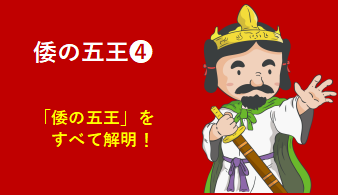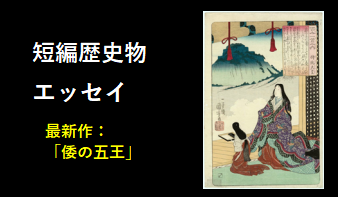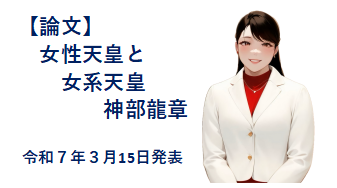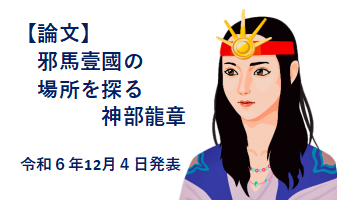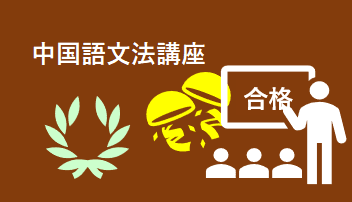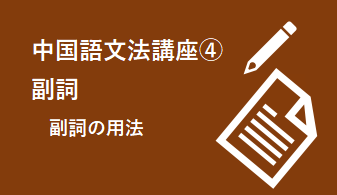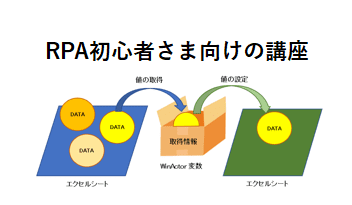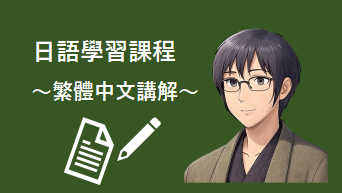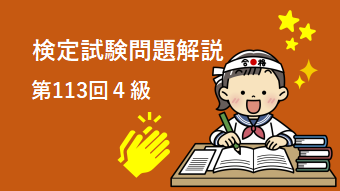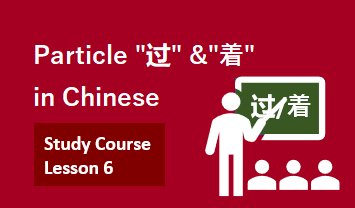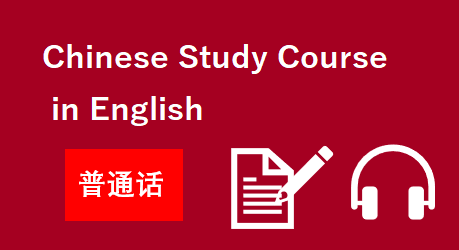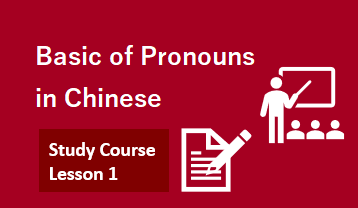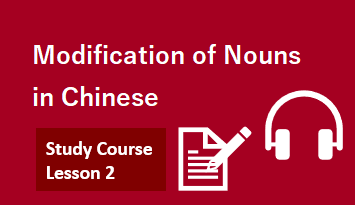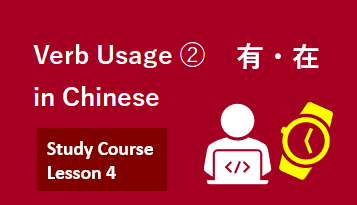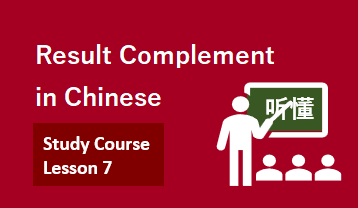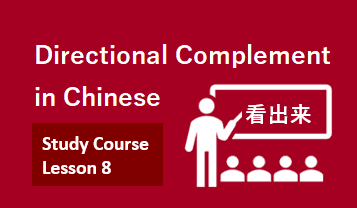Chinese Study Course [ Lesson6 ]

Hello everyone. I'm Goyan. In Lesson 6, we will study how to use Chinese aspect Particle "过" & "着". We have already studied how to use the aspect particle "了" in Lesson 5. Do you know these particles ? Don't worry if you did not know it because we can study them in detail now.
6-1 Aspect Particle "过"
(1)What is an Aspect Particle "过" ?
Aspect particles "过"
- In the form of 'verb + 过', "过" is used immediately after the verb to express an experience or completion/conclusion of action.
- "过" is called "Aspect particle".
- It expresses "completion/conclusion of experience or action" and does not indicate the past tense, so please be careful.
(2)How to Use the Aspect Particle "过"
➀When representing experience
(ⅰ)Affirmative form
| I have read this novel. |
| 这本小说我看过。 |
| zhè běn xiǎo shuō wǒ kàn guò 。 |
| ◆Detailed explanation 这本小说(title)+我(subject)+看(verb)+过(aspect particle)。 |
| ◆Vocabulary note 看:(verb) watch, look, see, read a book |
(ⅱ)Negative form

For the negative form, use '没有/没', and leave '过' attached. Please remember that the negative form of "experience" is left with '过'.
| I have never learned French. |
| 我从来没学过法语。 |
| wǒ cóng lái méi xué guò fǎ yǔ 。 |
| ◆Detailed explanation 我(subject)+从来(adverb)+没(adberb/negation)+学(verb)+过(aspect particle)+法语(object)。 |
| ◆Vocabulary note 从来:(adverb) ever 法语:(noun) French |
(ⅲ)Interrogative form (Question)

There are two forms of interrogative sentences: Let's check with the example sentence "Have you ever climbed that mountain?"
| Have you ever climbed that mountain? |
| 你爬过那座山吗? |
| nǐ pá guò nà zuò shān ma ? |
| ◆Detailed explanation 你(subject)+爬(verb)+过(asprct particle)+那座山(object)+吗(speech particle)? |
| ◆Vocabulary note 爬:(verb) climb 座:(quantifier) A quantifier for counting mountains, forests, lakes, seas, etc. ※ In addition to counting mountains, forests, lakes, seas, etc., '座' (quantifier) is also used to count structures such as warehouses, houses, factories, palaces, buildings, bridges, water gates, stoves, blast furnaces, clocks, statues, cannons, etc. It is also used when counting objects. |
| Have you ever climbed that mountain? |
| 你爬过那座山没有? |
| nǐ pá guò nà zuò shān méi yǒu ? |
| ◆Detailed explanation 你(subject)+爬(verb)+过(asprct particle)+那座山(object)+没有(adverb, question)? |
➁When expressing the completion or end of an action
(ⅰ)Affirmative form
| Also been to the port of Singapore. |
| 还去过新加坡港口。 |
| hái qù guò xīn jiā pō gǎng kǒu 。 |
| ◆Detailed explanation (subject omission)+还(adverb)+去(verb)+过(aspect particle)+新加坡港口(object)。 |
| ◆Vocabulary note 还 :(adverb) also 新加坡:(place name) Singapore 港口 :(noun) port |
| Please come after dinner tomorrow. |
| 明天你吃过晚饭来一趟。 |
| míng tiān nǐ chī guò wǎn fàn lái yí tàng 。 |
| ◆Detailed explanation 明天(time)+你(subject)+吃(verb[1])+过(aspect particle)+晚饭(object)+来(verb[2])+一趟(quantity complement)。 ※This sentence is in the form of "subject + {action 1} + {action 2}" and is called an "interlocking sentence". Interlocking sentences are usages that express continuous actions. ・Action 1:吃(verb[1])+过(aspect particle)+晚饭(object) ・Action 2:来(verb[2])+一趟(quantity complement) |
| ◆Vocabulary note 一趟:(number + quantifier) 1 time ※ "趟" is a quantifier that counts the number of round trips and the number of buses and trains. |
(ⅱ)Negative form

Negative forms use '没有/没', and '过' usually disappears.
| Have you had lunch yet? I haven't eaten yet. |
| 午饭你吃过了吗? 还没吃呢。 |
| wǔ fàn nǐ chī guò le ma ? hái méi chī ne 。 |
| ◆Detailed explanation 午饭(title)+你(subject)+吃(verb)+过(aspect particle)+了(speech particle)+吗(speech particle)? 还(adverb)+没(adverb, negation)+吃(verb)+呢(speech particle)。 |
| ◆Vocabulary note 午饭:(noun) lunch 还 :(adverb) yet ※"还" (adverb) can be used not only to mean "moreover", but also to mean that the action is continuing or that the state or situation remains unchanged. 呢 :(speech particle) In the form of〔还没[有]+verb+呢〕, I haven't done… yet. |
(ⅲ)Interrogative form (Question)

There are two forms of interrogative sentences: Let's check with the example sentence "Have you finished your lunch?"
| Have you finished your lunch? |
| 午饭你吃过了吗? |
| wǔ fàn nǐ chī guò le ma ? |
| ◆Detailed explanation 午饭(title)+你(subject)+吃(verb)+过(aspect particle)+了(speech particle)+吗(speech particle)? |
| Have you finished your lunch? |
| 午饭你吃过了没有? |
| wǔ fàn nǐ chī guò le méi yǒu ? |
| ◆Detailed explanation 午饭(title)+你(subject)+吃(verb)+过(aspect particle)+了(speech particle)+没有(adverb, question)? |
6-2 Aspect Particle "着"
(1)What is an Aspect Particle "着" ?
Aspect particles "着"
- In the form of "verb+着", "着" is used immediately after the verb to express the continuation of the state, the continuation of the action / action.
- In addition, there is also a usage that expresses the meaning of "to do (verb 2) while doing (verb 1)" in the form of "verb 1 + 着 + verb 2".
- It is also used to express things that do not change in everyday life (for example, going to school in a fixed style every morning).
- "着" is called "Aspect particle".
- It is used after verbs whose movements are silent and expresses the state of being sustained, so it is rarely used in negative or interrogative sentences because it is not meant to deny or ask questions in the first place.
(2)How to Use the Aspect Particle "着"
➀Continuation of the state

It is important to note that regarding the continuation of the state, "着" follows verbs in which movement is still and indicates a sustained state (for example, a picture hanging on the wall or sitting on a sofa).
(ⅰ)墙上挂着一幅水墨画。
| There is an ink painting on the wall. |
| 墙上挂着一幅水墨画。 |
| qiáng shàng guà zhe yì fú shuǐ mò huà 。 |
| ◆Detailed explanation 墙上(place)+挂(verb)+着(aspect particle)+一幅水墨画(object)。 |
| ◆Vocabulary note 墙:(noun) wall 挂:(verb) hang 幅:(quantifier)(quantifier for counting paintings, drawings, maps, etc.) |
(ⅱ)他在沙发上坐着。
| He is sitting on the sofa. |
| 他在沙发上坐着。 |
| tā zài shā fā shàng zuò zhe 。 |
| ◆Detailed explanation 他(subject)+在沙发上(place/prepositional phrase)+坐(verb)+着(aspect particle)。 |
| ◆Vocabulary note 沙发:(noun) sofa 坐 :(verb) sit |
(ⅲ)今天她穿着一件很好看的衬衫。
| Today she is wearing a nice shirt. |
| 今天她穿着一件很好看的衬衫。 |
| jīn tiān tā chuān zhe yí jiàn hěn hǎo kàn de chèn shān 。 |
| ◆Detailed explanation 今天(time)+她(subject)+穿(verb)+着(aspect particle)+一件很好看的衬衫(object)。 |
| ◆Vocabulary note 今天:(noun) today 好看:(adjective) beautiful 件 :(quantifier)(In addition to counting the number of cases, a quantifier that counts the number of jackets and shirts) 衬衫:(noun) shirt |

The expression "一件很好看的衬衫" can be applied in many ways. Please remember the pattern. By the way, do you remember to always put an adverb before the adjective ? Do not forget it!
➁Continuation of the action / action

In the form of "adverb (正/在/正在) + verb + 着 (+ object) (+ 呢)", it expresses that an action or action continues for a certain period of time. "···are doing". It indicates not only the present but also the continuation of past actions and actions.
| When he came, we were discussing Chinese history. |
| 他来的时候,我们一起讨论着中国历史呢。 |
| tā lái de shí hòu wǒ men yī qǐ tǎo lùn zhe zhōng guó lì shǐ ne。 |
| ◆Detailed explanation 他来的时候(time),我们(subject)+一起(adverb)+讨论(verb)+着(aspect particle)+中国历史(object)+呢(speech particle)。 ・他来的时候(time)➡他来的(noun modifier)+时候(noun) ・他来的(noun modifier)➡他(subject)+来(verb)+的(structual particle) |
| ◆Vocabulary note 时候:(noun) when 讨论:(verb) discuss |
③Form of "verb 1 + 着 + verb 2"

There is also a usage that expresses the meaning of "to do (verb 2) while doing (verb 1)" in the form of "verb 1 + 着 + verb 2". For example, "她笑着说:・・・" means that she said ・・・ with a smile.

Sentences in which two or more verbs or verb phrases are consecutive for one subject like "Subject + {action 1} + {action 2}" is called "Interlocking sentence". For details, please refer to Chinese Grammar Course 15) Interlocking sentences(中国語文法講座 15)連動文).
| “I love you!” she said with a laugh. |
| 她笑着说:“我喜欢你!” |
| tā xiào zhe shuō wǒ xǐ huān nǐ。 |
| ◆Detailed explanation 她(subject)+笑(verb 1)+着(aspect particle)+说(verb 2):“我(subject)+喜欢(verb)+你(object)!”。 |
6-3 Summary of aspect particles

Summary of aspect particles!
- It is used immediately after the verb in the form of "verb + 〇".
"Verb + 了": Represents the realization and completion of an action
"Verb + 过": Represents experience or the completion / end of an action
"Verb + 着": Indicates that the state is continued after the verb with quiet movement

Do you understand the usage of the aspect particle "过" & "着" ?
The most important points are that when representing experience, for the negative form, use '没有/没', and leave '过' attached, however, when expressing the completion or end of an action, negative forms use '没有/没', and '过' usually disappears. See you next!



